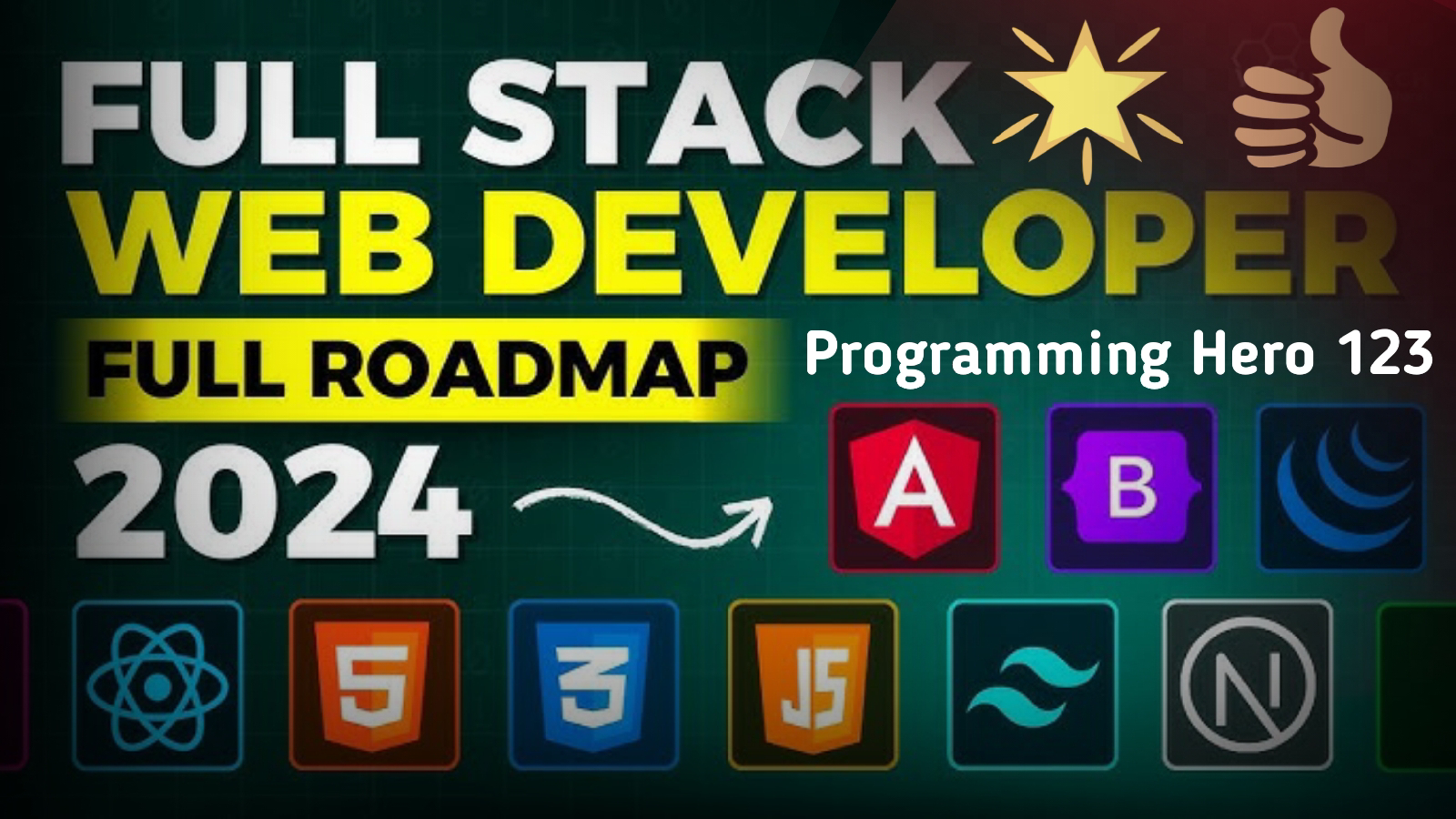The Ultimate Guide to Becoming a Full-Stack Developer in 2024
The Ultimate Guide to Becoming a Full-Stack Developer in 2024
By Programming Hero 123
Full-stack development is one of the most sought-after skills in the tech industry today. A full-stack developer is proficient in both frontend and backend development, enabling them to build complete web applications from scratch. If you're aspiring to become a full-stack developer in 2024, this comprehensive guide will provide you with a roadmap, essential tools, and resources to kickstart your journey.
1. Understanding the Basics
Before diving into full-stack development, it's crucial to have a solid foundation in programming and web development basics. Here are the key areas to focus on:
HTML/CSS: The backbone of web development. Learn how to structure web pages with HTML and style them with CSS. Understanding CSS Flexbox and Grid is essential for responsive design.
JavaScript: The programming language of the web. Master JavaScript fundamentals, including ES6+ features, to add interactivity to web pages.
Version Control/Git: Learn how to use Git for version control. Understand how to push your code to platforms like GitHub, GitLab, or Bitbucket.
Resources:
2. Frontend Development
Frontend development involves creating the user interface (UI) and user experience (UX) of a web application. In 2024, the following tools and frameworks are trending:
JavaScript Frameworks/Libraries:
- React.js: The most popular frontend library. Learn components, JSX, state management, and hooks.
- Vue.js: A progressive framework that’s easy to integrate into projects.
- Angular: A robust framework backed by Google. Learn TypeScript as well.
CSS Frameworks/Preprocessors:
- Bootstrap: Provides a responsive grid system and pre-built components.
- Tailwind CSS: A utility-first CSS framework.
- SASS/SCSS: A CSS preprocessor that adds power and elegance to CSS.
Frontend Build Tools:
- Webpack: Module bundler for JavaScript.
- Vite: A faster build tool that’s gaining popularity in the community.
- Babel: JavaScript compiler to convert ES6+ code into backward-compatible JavaScript.
Resources:
3. Backend Development
Backend development focuses on server-side logic, databases, and APIs. It’s the engine that powers the frontend. Here are the key backend technologies to learn:
Programming Languages:
- JavaScript/Node.js: Leverage JavaScript on the server-side with Node.js. Learn Express.js for building RESTful APIs.
- Python/Django: Python is great for backend development. Django, a high-level Python framework, is excellent for rapid development.
- Java/Spring Boot: Java is still widely used in large-scale applications, and Spring Boot makes it easier to build microservices.
Databases:
- SQL Databases: Learn SQL with MySQL or PostgreSQL for relational data management.
- NoSQL Databases: MongoDB is a popular choice for handling unstructured data.
- ORMs: Use Object-Relational Mappers like Sequelize (for Node.js) or SQLAlchemy (for Python) to interact with your databases.
APIs and Authentication:
- RESTful APIs: Learn how to design and implement REST APIs.
- GraphQL: A query language for your API, useful when you need more flexibility.
- JWT and OAuth: Understand how to implement authentication and authorization in your web apps.
Resources:
4. DevOps and Deployment
Knowing how to deploy your applications is crucial for full-stack developers. DevOps practices ensure smooth deployment, monitoring, and scaling of your web apps.
Web Servers:
- Nginx/Apache: Learn how to configure web servers.
Continuous Integration/Continuous Deployment (CI/CD):
- GitHub Actions: Automate testing and deployment workflows.
- Jenkins: Another popular CI/CD tool.
Containerization:
- Docker: Containerize your applications to ensure they run consistently across different environments.
Cloud Platforms:
- AWS: Amazon Web Services offers a wide range of cloud services.
- Azure/GCP: Microsoft Azure and Google Cloud Platform are other leading cloud providers.
Monitoring and Logging:
- Prometheus/Grafana: Tools for monitoring and alerting.
- ELK Stack: Elasticsearch, Logstash, and Kibana for logging and analytics.
Resources:
5. Soft Skills and Best Practices
Being a successful full-stack developer goes beyond technical skills. Here are some essential soft skills and best practices:
- Problem-Solving: Sharpen your ability to break down problems and find effective solutions.
- Communication: Whether working in a team or freelancing, clear communication is key.
- Time Management: Balancing multiple tasks effectively is crucial in full-stack development.
- Version Control Best Practices: Learn branching strategies like Git Flow.
- Code Quality: Focus on writing clean, maintainable code. Learn about SOLID principles, design patterns, and testing methodologies.
- Security Best Practices: Implement security best practices like HTTPS, data validation, and protection against common vulnerabilities (e.g., SQL injection, XSS).
Resources:
6. Building Projects and Portfolio
One of the best ways to solidify your skills and make yourself marketable is by building real-world projects. Here are some project ideas:
- E-commerce Website: Implement product listings, a shopping cart, and checkout functionality.
- Blog Platform: Create a content management system (CMS) where users can create, edit, and delete posts.
- Social Media App: Build a simple social network with profiles, friend requests, and messaging.
- API Development: Create a RESTful API for a bookstore or a movie database.
Once you’ve built some projects, create a portfolio website to showcase your work. GitHub Pages, Netlify, and Vercel are great options for hosting your portfolio.
Resources:
- FreeCodeCamp
- LeetCode: For practicing coding problems and algorithms.
7. Keep Learning and Stay Updated
The tech industry evolves rapidly, so continuous learning is vital. Follow industry blogs, subscribe to newsletters, and join communities to stay updated on the latest trends and technologies.
Popular Blogs:
Communities:
Conclusion
Becoming a full-stack developer in 2024 requires dedication, practice, and continuous learning. By following this roadmap and utilizing the recommended tools and resources, you'll be well on your way to mastering both frontend and backend development. Remember, the key to success is building projects, contributing to open-source, and staying up-to-date with the latest technologies.
Good luck on your full-stack journey!
By Programming Hero 123
Subscribe to our YouTube Channel for more content like this!



Comments
Post a Comment